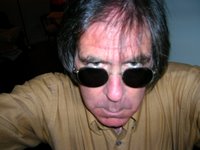
I think everyone has, at one time or another, run into someone who just gives him or her the creeps. It is not something that you can put your finger on but you are certain that there is something about that person that makes you feel uneasy and you find yourself inventing ways to just get away from them. Robert Todd Lincoln, Abraham Lincoln’s son, seems to have been that sort of person. He was born on August 1, 1843. On April 14, 1865 he declined his parents’ invitation to attend the play Our American Cousin with them, which was playing at Ford’s Theater in Washington, D.C. choosing instead to remain at home in the White House. That evening, John Wilkes Booth shot President Lincoln. At President Garfield’s invitation, Robert was at the Sixth Street Train Station in Washington, D.C. when Charles J. Giteau shot Garfield on August 2, 1881. As if those two events were not enough, Robert, at President William McKinley’s invitation, was also at the Pan-American Colombian Exposition in Buffalo, New York on September 6, 1901 when Leon F. Czolgosz pulled out a gun and shot McKinley.
 Freedom of the press is one of the cardinal freedoms of the United States and many other nations around the globe. It is however, a freedom that had to be fought for. German immigrant John Peter Zenger learned that first hand. In 1734, Zenger, at the helm of the New York Weekly Journal, was arrested and charged with seditious libel. On the 5th in 1735, Zenger was acquitted of all charges.
Freedom of the press is one of the cardinal freedoms of the United States and many other nations around the globe. It is however, a freedom that had to be fought for. German immigrant John Peter Zenger learned that first hand. In 1734, Zenger, at the helm of the New York Weekly Journal, was arrested and charged with seditious libel. On the 5th in 1735, Zenger was acquitted of all charges.







